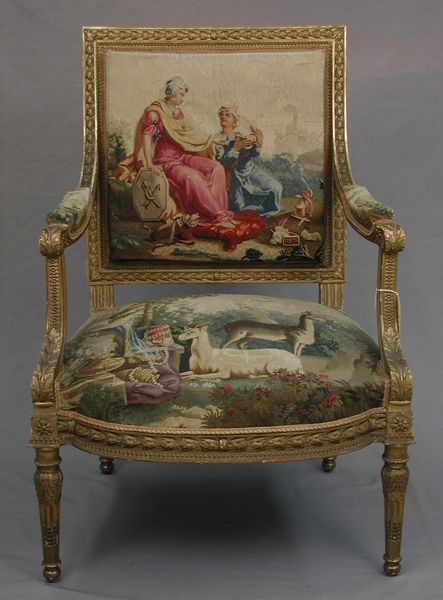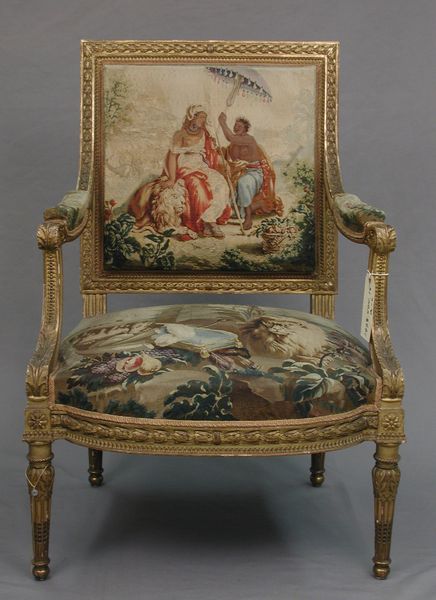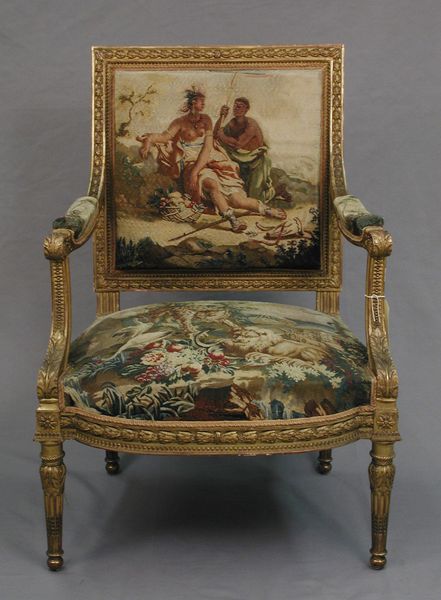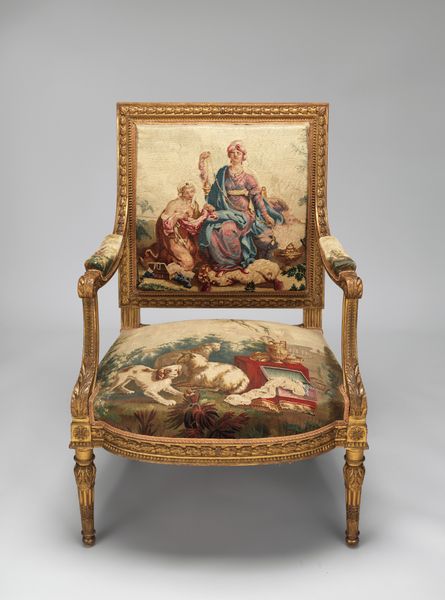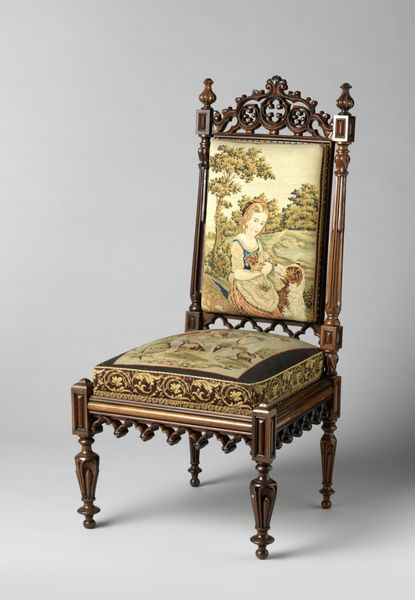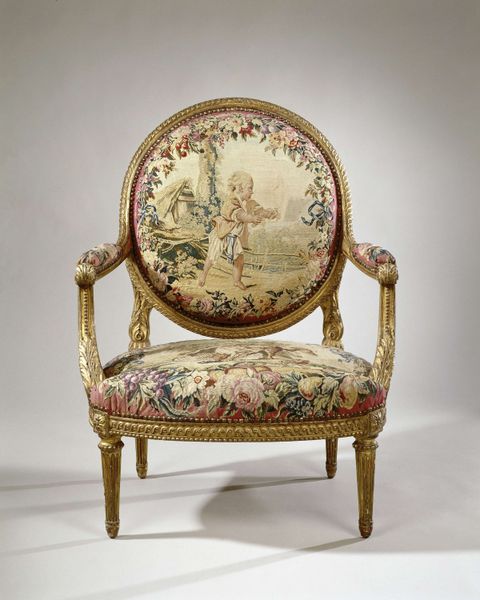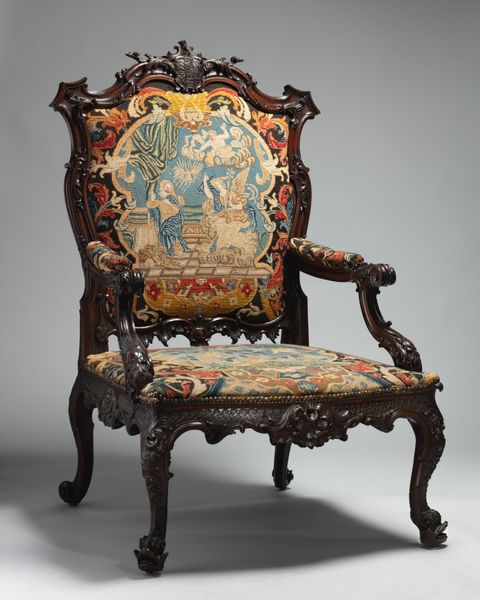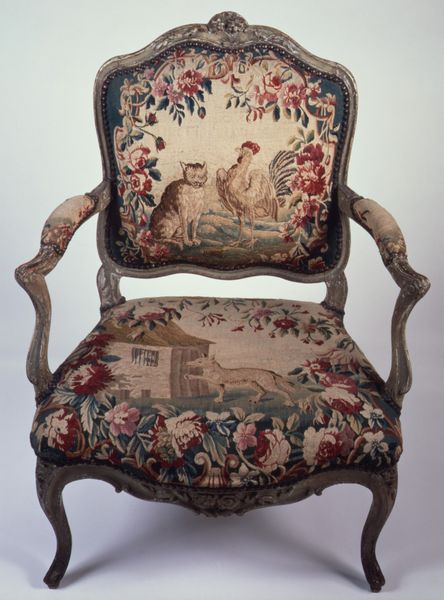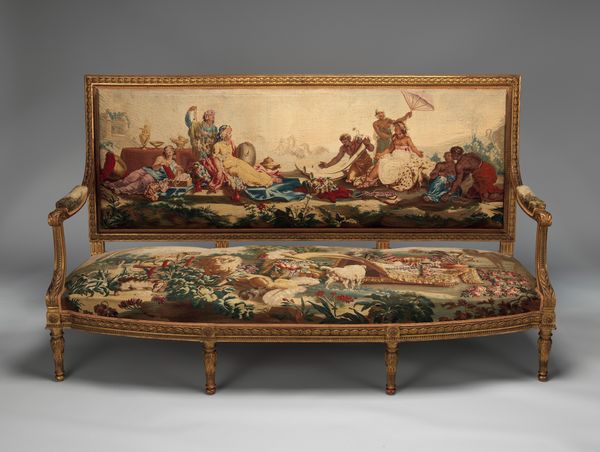
Dimensions: Overall: 37 3/4 × 27 × 24 in. (95.9 × 68.6 × 61 cm)
Copyright: Public Domain
Curator: It’s hard not to immediately notice the exquisite details of this late 18th-century armchair currently residing at the Metropolitan Museum of Art. Constructed between 1786 and 1791, the frame exhibits an ornate gilded style, while the seat and back are upholstered with incredibly intricate Beauvais tapestries. Editor: The immediate impression is, for me, luxurious storytelling. It evokes an era where even everyday objects were canvases for narratives. There's a real tension between the comfort it implies and the almost overwhelming detail. Curator: Exactly! And that detail is significant. Notice the tapestry on the back panel: the figures are a pastoral scene, quite typical for Rococo sensibilities. It’s imbued with allegorical weight, symbolizing courtly love and perhaps even alluding to mythological themes, rendered tangible through weaving. Editor: It seems that this kind of artistic commitment in furniture was quite the fashion at the time; such ostentation indicates privilege. Does the narrative in the tapestries convey specific socio-political values to a late 18th-century viewer? Curator: Certainly. Weaving in pictorial or even portrait-like imagery elevated domestic items. Think of the role these furnishings played as indicators of social standing, statements of cultivated taste, and representations of political views among the elite circles that gathered in such decorative environments. Editor: This brings an extra dimension to the word 'armchair' when viewed as something more akin to performative display and wealth. Knowing these types of artistic creations graced particular historical circumstances, the symbols act almost like psychological imprints into that space and time. Curator: Precisely. Cultural memory resides not just in grand history, but in the material world as well. The chair exemplifies that intersection – artistry, utility, and an era's self-image woven together. Editor: When looking at such period pieces in modern spaces, it’s fascinating to see how this chair can spark a sense of how aesthetics, social expectations, and art shape cultural expressions across time.
Comments
No comments
Be the first to comment and join the conversation on the ultimate creative platform.
